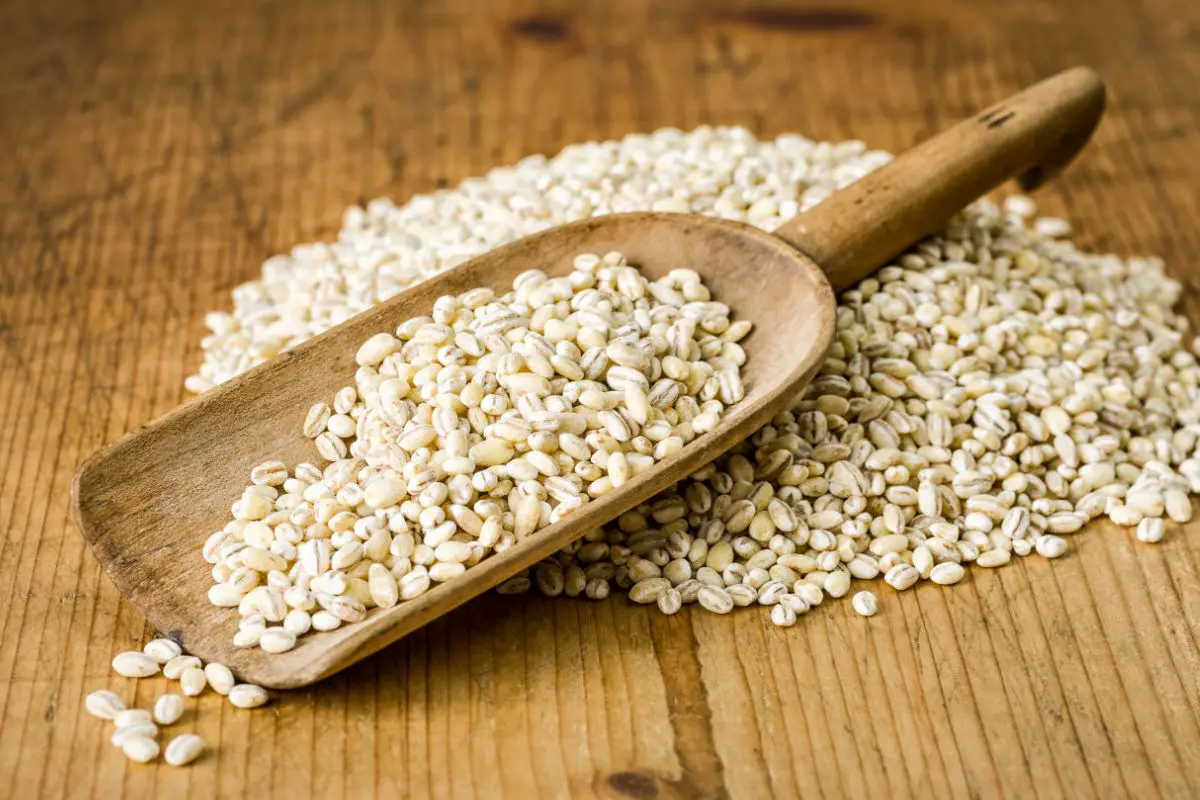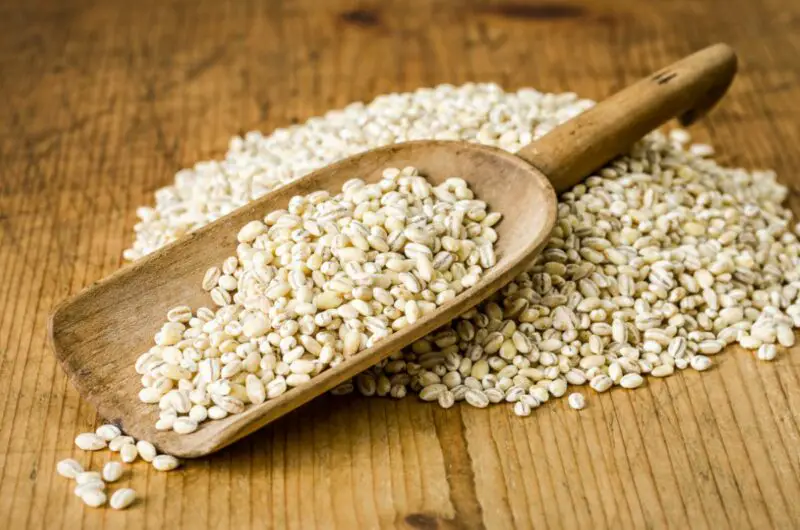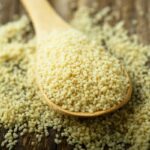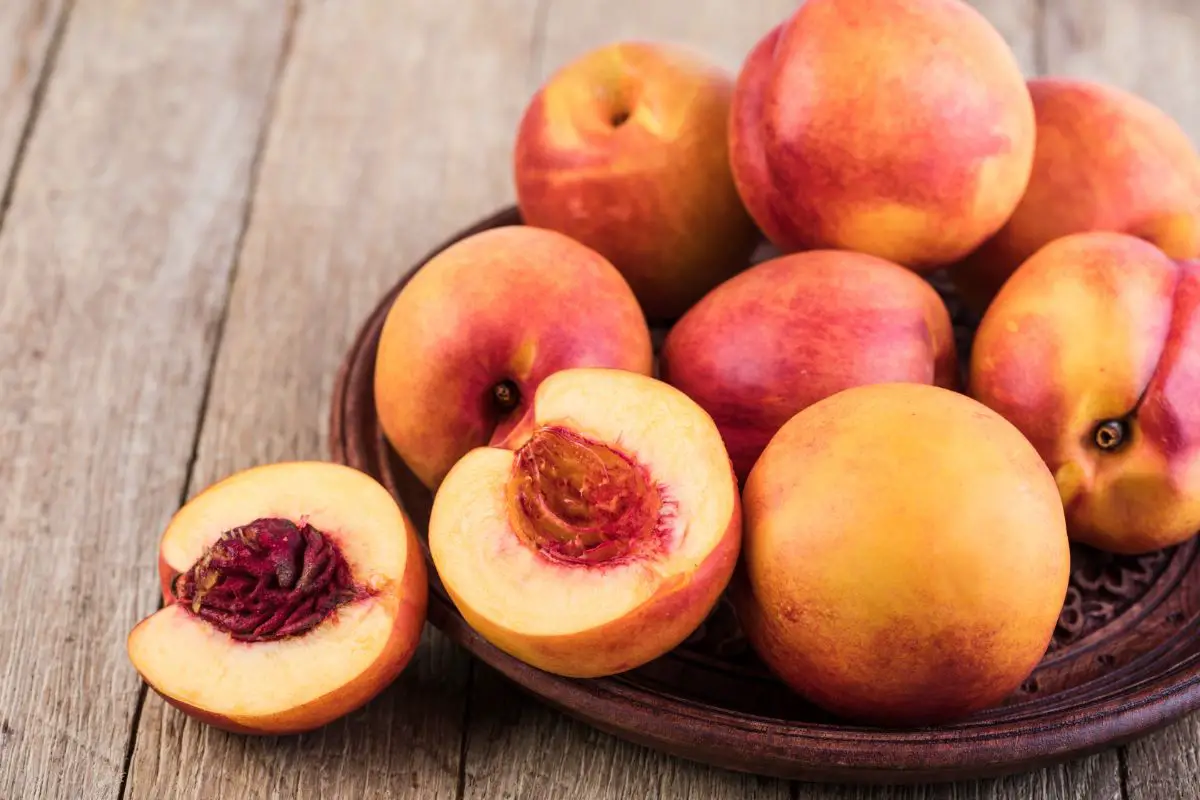Pearl barley is a popular ingredient used in many dishes, from hearty stews to light salads. It has a unique texture and flavor that can add depth and richness to your meals.

However, if you’re looking for a replacement for pearl barley due to dietary restrictions, availability, or personal preference, there are many options available.
In this article, we will explore 11 ingredients that you can use to replace pearl barley in your meals, so keep reading below to check what we have for you!
1. Quinoa
Quinoa is a versatile and nutritious grain that makes a great replacement for pearl barley. It’s gluten-free, high in protein, and has a nutty flavor and a slightly chewy texture similar to barley.
You can use it in many of the same dishes as pearl barley, such as soups, stews, and salads, but it is also great as a base for grain bowls or as a side dish. Moreover, quinoa is easy to cook and can be seasoned with herbs, spices, and vegetables to add extra flavor.
Plus, it’s a great source of fiber and essential nutrients, making it a healthy choice for anyone looking for a nutritious substitute for pearl barley!
2. Quinoa Flakes
If you’re looking for a gluten-free and protein-rich substitute for pearl barley, try quinoa flakes which are made from whole quinoa that has been steamed, rolled, and flattened into thin flakes.
They have a mild, nutty taste and a delicate texture that can complement a variety of dishes and are an excellent source of protein, fiber, and essential nutrients, making them a healthy option for your meals.
They can also be used in soups, stews, and as a breakfast cereal with your favorite toppings, which makes them another nice alternative to pearl barley for those with gluten intolerance or those seeking a protein-rich diet.
3. Farro
If you’re looking for an ancient grain that can stand in for pearl barley in your favorite recipes, consider Farro. This nutty and chewy grain has been around for thousands of years and is a staple of Italian cuisine.
What makes Farro a great substitute for pearl barley is its firm texture and slightly nutty flavor. It’s delicious in salads, soups, and stews, and pairs well with a variety of vegetables and proteins.
You can even use it as a base for a grain bowl or as a side dish with your favorite main course just like quinoa.
4. Brown Rice
For a gluten-free and nutritious substitute for pearl barley, brown rice is another fantastic option. Its chewy texture and slightly nutty taste make it a great stand-in for barley in many recipes.
Brown rice is rich in fiber, minerals, and vitamins, making it a healthy choice. It’s also versatile and you can add it to soups, stews, and salads, as well as have it as a side dish with your favorite protein.
You can cook it ahead of time and keep it in the fridge for easy addition to any meal, and since it is a pantry staple that you probably already have on hand, make good use of it!
5. Bulgur
Bulgur is a type of cracked wheat that is commonly used in Middle Eastern dishes as it comes with its unique nutty flavor and a texture that is similar to pearl barley. What sets bulgur apart is its quick cooking time, which can save you valuable time in the kitchen.
Bulgur also packs lots of fiber, protein, and essential minerals, making it a healthy and filling choice.
It’s delicious in salads, pilafs, and stuffed vegetables, and pairs well with a variety of spices and herbs, so try replacing pearl barley with bulgur in your next recipe and see how it adds a unique flavor and texture to your dish!
6. Wheat Berries
If you’re looking for a whole grain with a chewy texture and nutty flavor to replace pearl barley in your recipe, try wheat berries.
These unprocessed grains of wheat are high in fiber, protein, vitamins, and minerals, and make a perfect substitute for barley in many dishes. From salads, soups, and stews to casseroles and pilafs, wheat berries can add a unique taste and texture to your meal.
And with a little seasoning, such as herbs and spices, you can easily customize the flavor to suit your taste.
7. Freekeh
Freekeh is an ancient Middle Eastern grain that is quickly gaining popularity as a versatile and healthy substitute for pearl barley. It’s made from young green wheat that is roasted and cracked, resulting in a slightly smoky and nutty flavor.
Freekeh has a chewy texture and is packed with fiber, protein, and essential minerals. It’s perfect in salads, soups, and pilafs, and you can use it in place of pearl barley for a unique taste and texture.
With its rising popularity, you can easily find Freekeh in specialty stores or online, so give this flavorful and nutritious grain a try in your next recipe!
8. Couscous
Couscous is a tiny pasta made from durum wheat that is a great substitute for pearl barley. It has a fluffy texture and a neutral flavor that makes it versatile and easy to use in many dishes.
Moreover, it is a quick-cooking grain that can be ready in just a few minutes, making it a perfect option for busy weeknights.
You can add it to salads, pilafs or enjoy it as a side dish with your favorite protein, and while it may not have the same chewy texture as pearl barley, it’s a tasty and convenient alternative that can add a light and fluffy element to your meals!
9. Buckwheat
Buckwheat is a nutritious and gluten-free grain that is an excellent substitute for pearl barley in many dishes.
It has a nutty and earthy flavor with a slightly crunchy texture that can enhance your meal, while it is also rich in fiber, protein, and essential nutrients, making it a healthy option for those seeking a nutritious diet.
You can have it in soups, stews, salads, and as a side dish with your favorite protein, and with its versatility and unique flavor profile, it is a great alternative to pearl barley for those with dietary restrictions or those who want to try something new.
10. Wild Rice
Wild rice is a unique and flavorful substitute for pearl barley in many dishes. It is an aquatic grass native to North America with a slightly nutty and earthy taste and a chewy texture.
Wild rice is packed with protein, fiber, and essential minerals, making it a healthy option for your meals. From soups and stews to having it as a side dish with your favorite protein; anything goes!
Moreover, it can add a touch of elegance to your meal and is especially great for special occasions, while its unique texture and flavor profile makes it a great alternative to pearl barley that can add depth and richness to your dishes.
11. Barley Flakes
Finally, if you’re looking for a more convenient and quick-cooking substitute for pearl barley, try barley flakes. Barley flakes are made from whole barley that has been steamed, rolled, and flaked, resulting in a similar texture and flavor as pearl barley.
They have a slightly nutty taste and a chewy texture that can complement a variety of dishes. Barley flakes are, of course, also high in fiber, protein, and essential nutrients, making them a healthy option for your meals.
You can use barley flakes in soups, stews, and as a breakfast cereal with your favorite toppings, which makes them our last but not least are a great alternative to pearl barley for those short on time or seeking convenience.
The Bottom Line
From familiar grains like quinoa and farro to lesser-known options like buckwheat and wild rice, these substitutes will add variety and flavor to your dishes so if you are not feeling like having pearl barley as a side to your chicken, try these options and you won’t regret it!
11 Pearl Barley Substitutes That Go With Everything
Course: Substitutes4
servings30
minutes40
minutes300
kcalFrom familiar grains to lesser-known options, this article has 11 substitutes for pearl barley that can add flavor and nutrients to your every meal!
Ingredients
Quinoa
Quinoa Flakes
Farro
Brown Rice
Bulgur
Wheat Berries
Freekeh
Couscous
Buckwheat
Wild Rice
Barley Flakes
Directions
- Decide on what substitute you need
- Pick a substitute from the list above
- Read what you need to substitute with
- Create the recipe and enjoy
Recipe Video
https://www.youtube.com/watch?v=_vrvhibtzLYVideo can’t be loaded because JavaScript is disabled: Health Benefits, Weight Loss & Exciting Pearl Barley Recipes! (https://www.youtube.com/watch?v=_vrvhibtzLY)- What Exactly Do Chickpeas Taste Like? Is There A Distinct Flavor? - September 30, 2023
- Top 11 Low Carb Options at Sonic Drive-In for Keto Diet - September 30, 2023
- What Should You Serve Alongside Potato Salad? 8 Incredible Side Dishes - September 30, 2023











